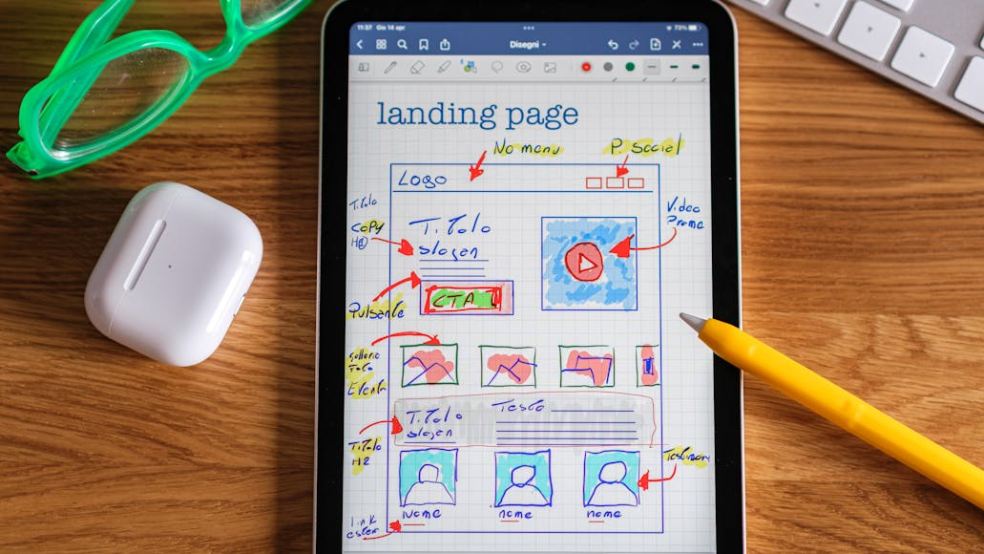
The Growing Role of Digital Design in Everyday Life
Digital design is no longer limited to creative agencies or tech start-ups. It shapes how we shop, learn, connect, and even run our businesses. From the websites we browse to the apps we use to the logos we instantly recognise, design has become part of daily decision-making. For businesses, the ability to present themselves clearly and attractively online is now as important as having a shopfront on the high street. Partnering with experts like Creative Tweed can help turn these ideas into something that resonates with customers.
Why design matters in first impressions
Think about the last time you clicked on a website. Did it load quickly? Was it easy to navigate? Did the colours and layout feel professional? Most people decide whether to stay on a site within a few seconds. A cluttered or confusing design pushes them away, while a clean and appealing design encourages them to stick around. For local businesses in Devon and beyond, this can be the difference between winning a new customer and losing them to a competitor.
Design in shopping and retail
Online shopping has transformed how people discover and purchase products. Shoppers might never visit a physical store, yet they expect the same clarity and care online. Well-designed product pages, clear photography, and smooth checkout processes are all part of this experience. Independent retailers often find that investing in better online design gives them the edge, even against larger chains. When design feels trustworthy, customers feel confident in their purchase.
Learning and education shaped by design
Education has also moved far beyond the classroom. Many schools, universities, and training providers rely on digital platforms to deliver lessons and resources. A well-structured learning portal makes information easy to absorb. Poorly designed tools can frustrate both students and teachers. The way information is presented visually affects how quickly people understand and remember it. Whether it is a university course or a short online tutorial, design often decides whether learners stay engaged.
Everyday communication
Social media has become a daily habit for millions. But behind every post or advert lies design choices that shape how we react. Fonts, colours, and layouts all send signals before we even read the words. Businesses that understand this tend to attract more attention and generate stronger responses. For individuals, this might mean their charity fundraiser gets noticed. For companies, it could mean a local campaign reaches a wider audience. Design is the hidden driver that often determines the success of communication.
Branding as a daily marker
We often underestimate how much branding surrounds us. From the packaging of our morning coffee to the transport apps we use to get around, design decisions guide our behaviour. Logos, typefaces, and colour schemes are not chosen at random. They are carefully planned to build trust and recognition. For small businesses, branding that reflects their values and connects with their audience helps them stand out in crowded markets. A clear brand identity makes it easier for customers to remember who they are dealing with and why it matters.
Mobile first, always
More people access websites on their phones than on desktop computers. This shift has forced businesses to rethink design from the ground up. A website that looks perfect on a large screen might be frustrating to use on a mobile. Pinching and zooming, slow loading times, or tiny buttons can put people off instantly. Designing for mobile first ensures the experience is smooth no matter what device someone uses. It also reflects the way people live now, checking information on the go.
Accessibility as part of design
Design is also about inclusion. A well-built site should be usable by people of all abilities. This can mean clear contrast between text and background, readable fonts, or options for screen readers. Accessibility is not just a technical requirement, it is a way to reach a wider audience and show respect for every customer. Businesses that take this seriously often see benefits in customer loyalty and reputation.
Local businesses catching up
In places like Devon, many small businesses rely on word of mouth and repeat customers. But more people are searching online before they ever walk through a door. Tourists planning trips, students looking for services, and families researching local activities all start with a search engine. If a business does not show up with a clear and appealing online presence, it misses these opportunities. Strong digital design gives even the smallest café, shop, or tradesperson the chance to reach new audiences.
Balancing tradition with change
One challenge for many local businesses is balancing long-standing traditions with modern expectations. A family-run business might have loyal customers in the community but still need a fresh website to attract younger audiences. Good design does not erase tradition, it helps present it in a way that feels current and welcoming. The tone, imagery, and style of digital platforms can reflect heritage while still appealing to new generations.
The role of storytelling
At the heart of digital design lies storytelling. Colours, shapes, and layouts all tell a story about what a business stands for. A law firm might choose clean lines and muted colours to signal professionalism. A bakery might use warm tones and playful fonts to create a friendly feel. These visual cues work faster than text to communicate values. Businesses that align their design with their story find it easier to build trust with their audience.
Continuous evolution
Design is never static. Trends change, technologies evolve, and customer expectations shift. A website that felt modern five years ago might feel outdated today. This does not mean chasing every trend, but it does mean checking in regularly to ensure design reflects current standards. Businesses that update their digital presence thoughtfully show they are still active and relevant, which reassures potential customers.
Everyday impact
The impact of digital design can be felt in small, everyday ways. When you pay a bill online without frustration, that is good design. When you find a new café through a mobile-friendly site, design made it possible. When a charity’s campaign catches your eye on social media, design helped deliver the message. These moments might seem minor, but together they shape how we experience the world.
Looking ahead
As technology continues to spread into every corner of life, design will only grow in importance. Artificial intelligence, virtual reality, and new platforms will all demand thoughtful design choices to make them accessible and engaging. Businesses that invest in design today are preparing themselves for this future. They will be better equipped to adapt as customer behaviours shift again.
Final thoughts
Digital design has become a part of everyday life, guiding how we interact, shop, learn, and communicate. For businesses, it is no longer optional. A strong design presence helps build trust, attract customers, and stay relevant in a competitive world. Whether you are a small independent shop or a growing enterprise, the way you present yourself online matters as much as the products or services you offer. By paying attention to design, you are not just improving how things look, you are shaping how people feel about engaging with you.











